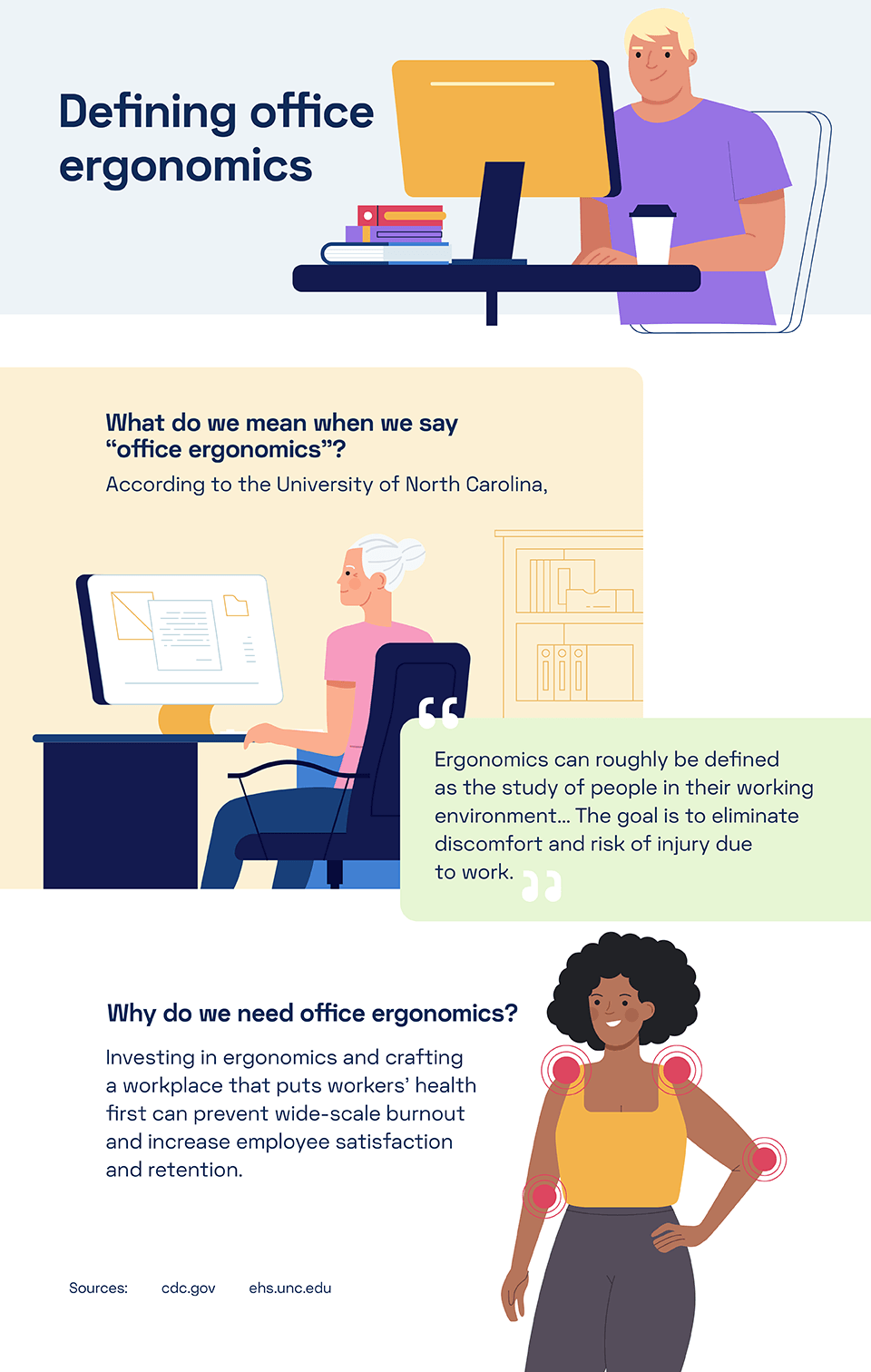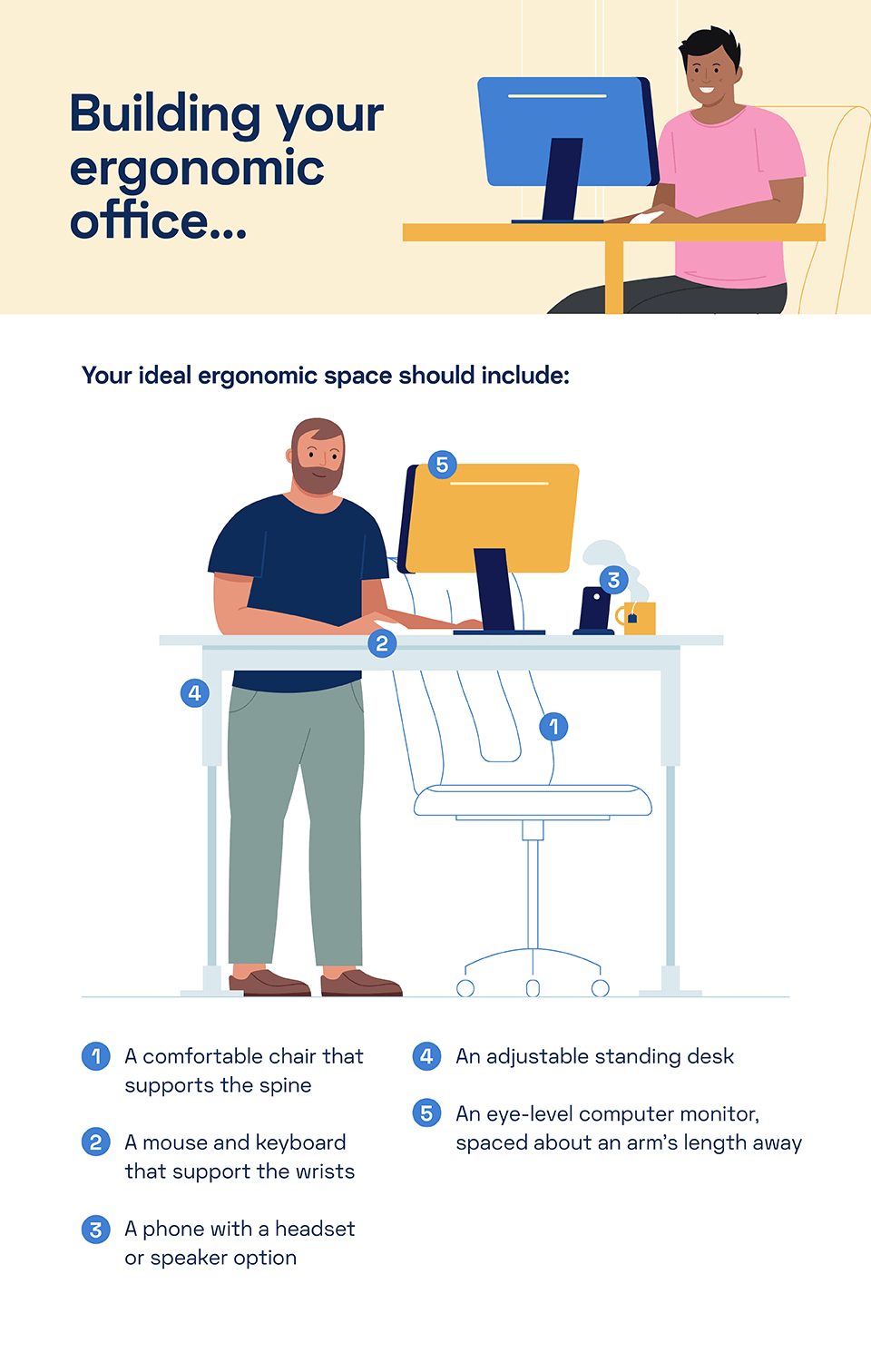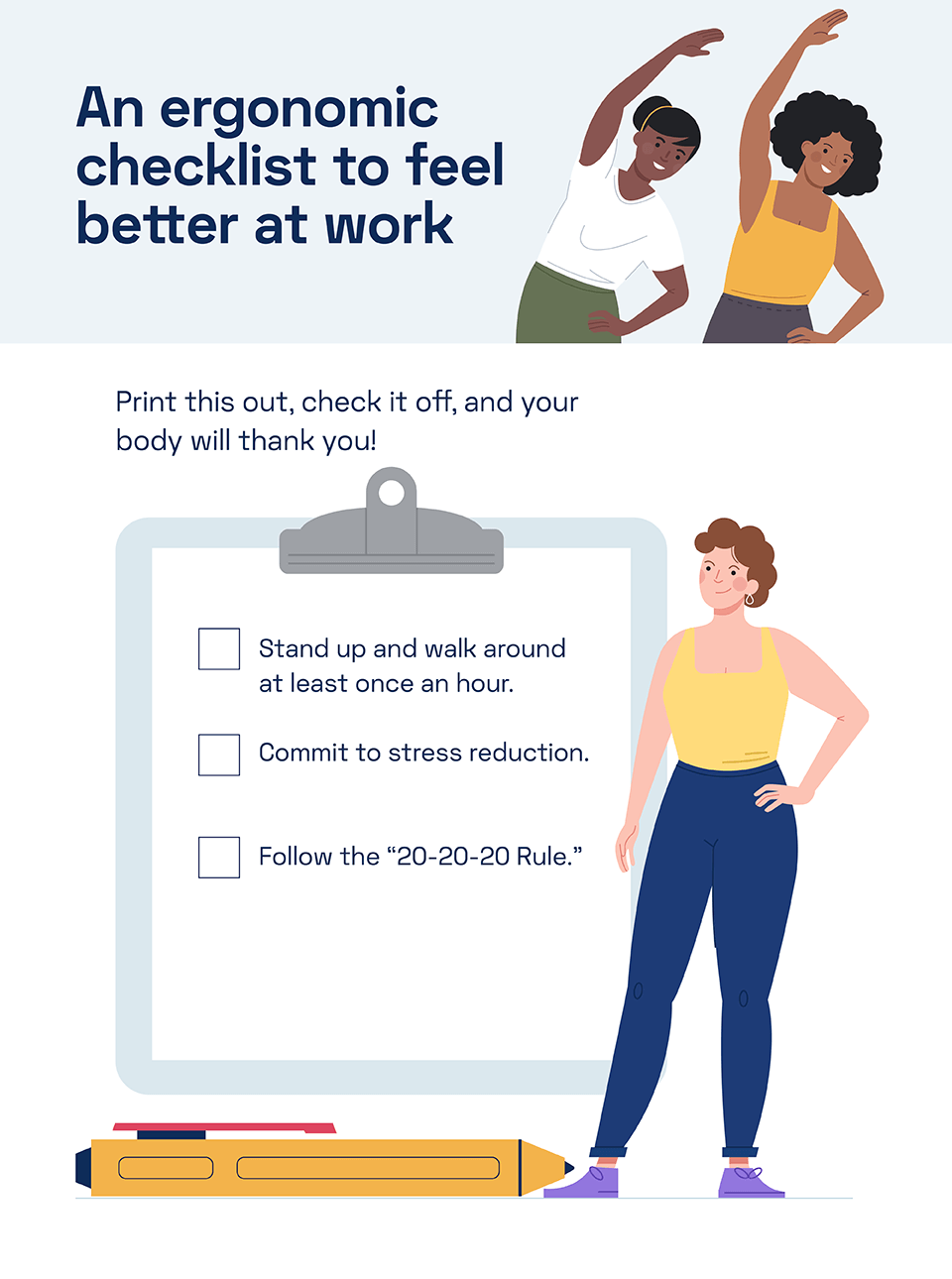
How Ergonomics Can Help Your Employees Take Care of Their Bodies
Sedentary work can take a toll on your company’s physical health. Help your team take better care of their bodies by committing to office ergonomics.
5 min read

Further Reading
-
 Jodie is a physical therapist with extensive experience in treating acute and chronic musculoskeletal and neurological conditions.3 min read
Jodie is a physical therapist with extensive experience in treating acute and chronic musculoskeletal and neurological conditions.3 min read -

Meet the Clinical Team: Tanya
Tanya Johnson, RN, BSN, NBC-HWC and Kaia Health Coach opens up about her career, passions, goals, and personal favorites.4 min read -

Meet the Kaia Health Clinical Team: Amy
Meet Amy, a Physical Therapist focused on empowering people with chronic conditions to improve their quality of life.4 min read


